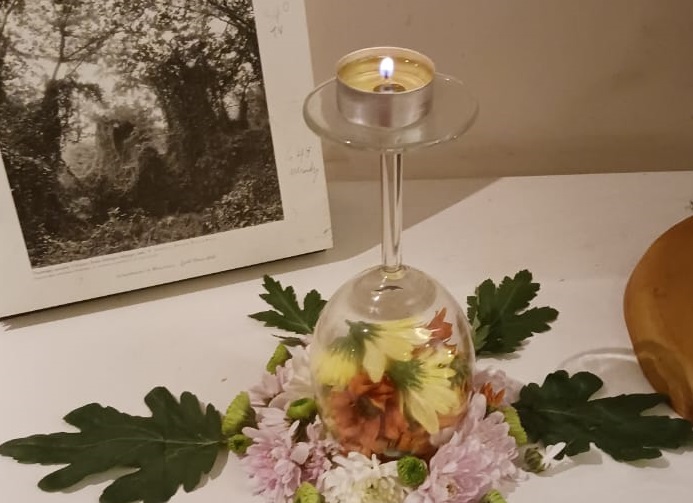
by K. Nganasegaran
If you are a Malaysian and you still don’t have the slightest idea why and how Deepavali is celebrated, then there is one phrase from the famous Malay proverb that suits you extremely well: katak di bawah tempurung, literally in English, it means you have cocooned yourself under a coconut shell, therefore having zero insights to the daily happenings on Planet Earth.
Etymologically, Deepavali is a Sanskrit word meaning a row of lamps. Diwali is a corrupted form of Deepavali used in Northern states of India. Interestingly, south Indian and east Indian states use the etymologically correct name of Deepavali.
Rajasekhara (a theologian, devotional poet and ruler from south India) referred to Deepavali as Dipamalika in his 9th-century Kavyamimamsa (a poetical encyclopaedia from the 9th century written in 18 chapters), where he mentioned the tradition of homes being whitewashed and oil lamps used to decorate homes, streets and markets at night). Diwali was also described by numerous travellers from outside India.
Also recognised as the Festival of Lights, it symbolises the spiritual victory of light over darkness, good over evil, and knowledge over ignorance. Deepavali is celebrated during the lowest period to bring past memories to strengthen our weaknesses, so to speak.
This festival is not just about idli and tosai being served with veggie or non-veggie mutton or chicken curry at the Deepavali breakfast brought down by generations after generations. There’s more to it.
A lot of millennial Indians grew up with sweet childhood memories of eating idli and tosai with mutton or chicken curry during Deepavali. Want to know why the curry on this auspicious day tastes different? It is because the mouth-watering curry is cooked overnight with plenty of coconut milk. That’s the trick.
Try it, make a pot of your favourite curry and leave it overnight. Add coconut milk the next day when you reheat it. It’s absolutely fabulous!
Murukku is the most famous snack for Deepavali while achu murukku is murukku’s partner in crime, but with a slightly sweet touch.
Nei urunda are the fattening ghee balls that all kids love while omapodi is another crunchy and flavourful noodle snack not to be missed.
There are dos and don’ts when preparing these delicious items before the big day. One of the taboos is not to taste first any of these snacks to be offered for prayers.
On Deepavali eve, the padaiyal offering of food for ancestors or deceased souls is done. All the palagaram (snacks) have to kept aside for them and only then you can taste them.
So, on that special day, you must place the Deepavali food, palagaram, fruits, new cloth, pure ghee, fresh cow’s milk and plain water on a huge banana leaf at the altar. You then place an agal vilaku (clay lamb) with gingelly oil in front of the photo of the deceased and everyone has to show arthi (a ceremony in which lights are lit and offered ) and sambrani (benzoin resin) in an anti- clockwise (clockwise is only for Gods)
Once the padayal has been offered, it’s better or wise to make a move from that place for a moment so that you will not interrupt them (yes, those departed souls) from enjoying the meal!
After a while the banana leaf is pulled forward or moved to a bit upfront. This is a sign that they will take all your offerings back.
Once the padaiyal is done, the food is shared with all the family members.
On the morning of Deepavali, Hindus wake up early to perform traditional rituals such as taking oil baths.
The oldest member of the family places three drops of oil on the foreheads of the other family members, after which they proceed to take their bath. It’s a belief that Goddess Lakshmi (Goddess of Wealth) lives in oil and Mother Ganga lives in warm water. This bath is said to remove bad luck.
Who knows one’s luck might change like striking the jackpot at this weekend’s 4D or other lotteries!
After the bath, one ought to wear new clothes and jewellery.
Different family backgrounds and upbringing do have a significantly way of how different Hindu communities celebrate Deepavali. People light lamps during Deepavali to show that light is more powerful than darkness, and good is more powerful than evil and to honour the celebration of new beginnings.
Wrapping up, let’s all put our 10 fingers together and hope that powerful light will brighten and remove all darkness lurking in places where people have to experience the raining of bombs and bullets 24/7 or face racism, sectarianism, caste-related discrimination and so forth.

The author of this article K. Nganasegaran also writes a column for Weekly Echo under the name of Sam Trailerman.